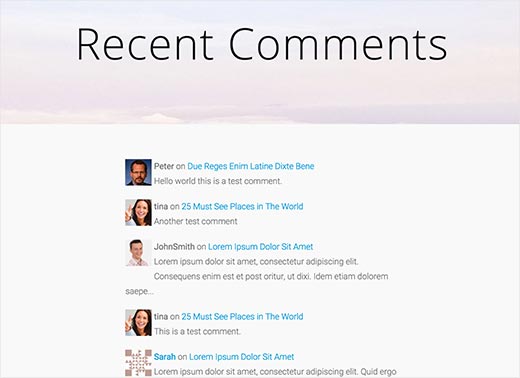Use the COMMENTstatement to add a comment about a table, view, materialized view, or column into the data dictionary. To drop a comment from the database, set it to the empty string ' '. In Sass permalink In Sass. Comments in the indented syntax work a little differently: they’re indentation-based, just like the rest of the syntax. Like SCSS, silent comments written with // are never emitted as CSS, but unlike SCSS everything indented beneath the opening // is also commented out. Indented syntax comments that start with /. work with indentation the same way, except that. Notes can come in all sorts of shapes and sizes. They vary, and their uses are completely up to the person writing the code. However, I try to keep things consistent in my code that way it's easy for the next person to read. So something like this might help.
Purpose

Commentsold Login
Use the COMMENT statement to add a comment about a table, view, materialized view, or column into the data dictionary.
To drop a comment from the database, set it to the empty string ' '.
See Also:
'Comments' for more information on associating comments with SQL statements and schema objects
Oracle Database Reference for information on the data dictionary views that display comments
Prerequisites
The object about which you are adding a comment must be in your own schema or:
To add a comment to a table, view, or materialized view, you must have
COMMENTANYTABLEsystem privilege.To add a comment to an indextype, you must have the
CREATEANYINDEXTYPEsystem privilege.To add a comment to an operator, you must have the
CREATEANYOPERATORsystem privilege.
Syntax
comment::=
Description of the illustration comment.gif
Semantics
TABLE Clause
Specify the schema and name of the table or materialized view to be commented. If you omit schema, then Oracle Database assumes the table or materialized view is in your own schema.
Note:
In earlier releases, you could use this clause to create a comment on a materialized view. You should now use theCOMMENTYahoo Comments
ONMATERIALIZEDVIEW clause for materialized views.COLUMN Clause
Specify the name of the column of a table, view, or materialized view to be commented. If you omit schema, then Oracle Database assumes the table, view, or materialized view is in your own schema.
You can view the comments on a particular table or column by querying the data dictionary views USER_TAB_COMMENTS, DBA_TAB_COMMENTS, or ALL_TAB_COMMENTS or USER_COL_COMMENTS, DBA_COL_COMMENTS, or ALL_COL_COMMENTS.
OPERATOR Clause

Specify the name of the operator to be commented. If you omit schema, then Oracle Database assumes the operator is in your own schema.
You can view the comments on a particular operator by querying the data dictionary views USER_OPERATOR_COMMENTS, DBA_OPERATOR_COMMENTS, or ALL_OPERATOR_COMMENTS.
INDEXTYPE Clause
Comments In Sql
Specify the name of the indextype to be commented. If you omit schema, then Oracle Database assumes the indextype is in your own schema.
You can view the comments on a particular indextype by querying the data dictionary views USER_INDEXTYPE_COMMENTS, DBA_INDEXTYPE_COMMENTS, or ALL_INDEXTYPE_COMMENTS.
MATERIALIZED VIEW Clause
Specify the name of the materialized view to be commented. If you omit schema, then Oracle Database assumes the materialized view is in your own schema.
You can view the comments on a particular materialized view by querying the data dictionary views USER_MVIEW_COMMENTS, DBA_MVIEW_COMMENTS, or ALL_MVIEW_COMMENTS.
IS 'string'
Comments To Or Comments On
Specify the text of the comment. Please refer to 'Text Literals' for a syntax description of 'string'.
Example
Youtube Comments
Creating Comments: Example To insert an explanatory remark on the job_id column of the employees table, you might issue the following statement:
To drop this comment from the database, issue the following statement:
